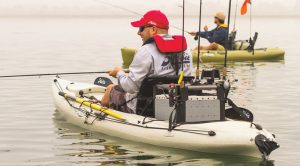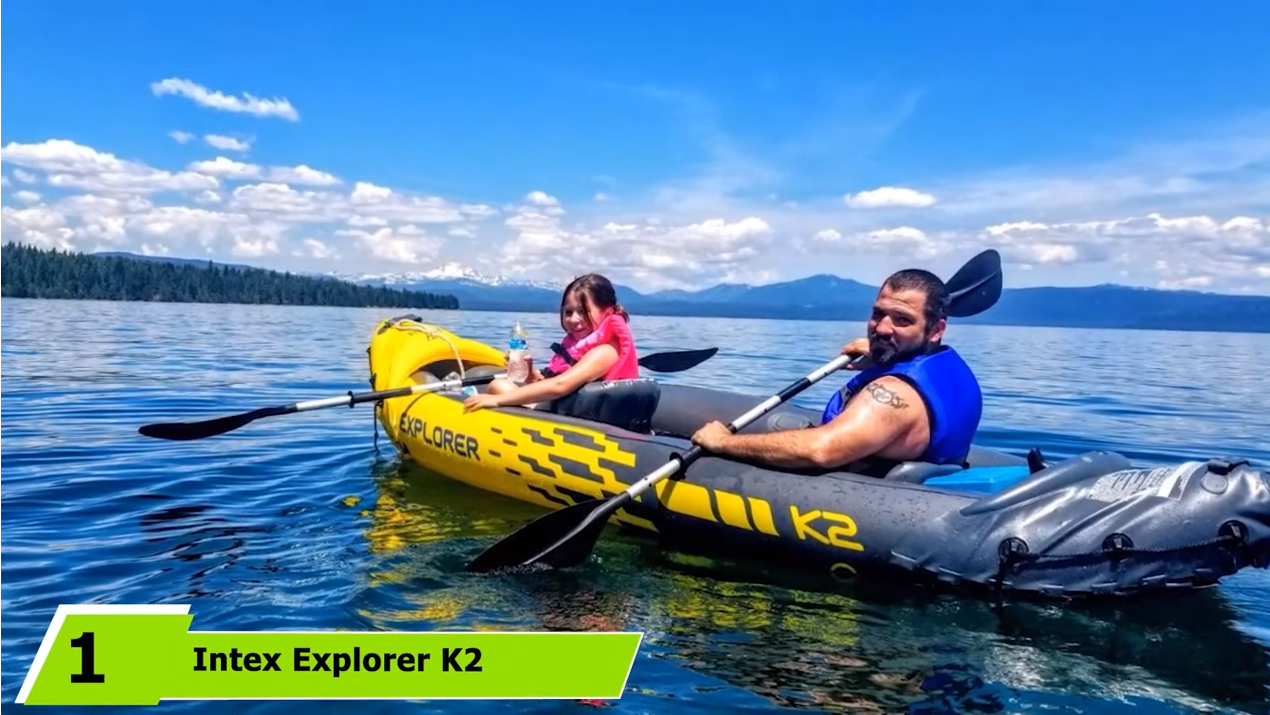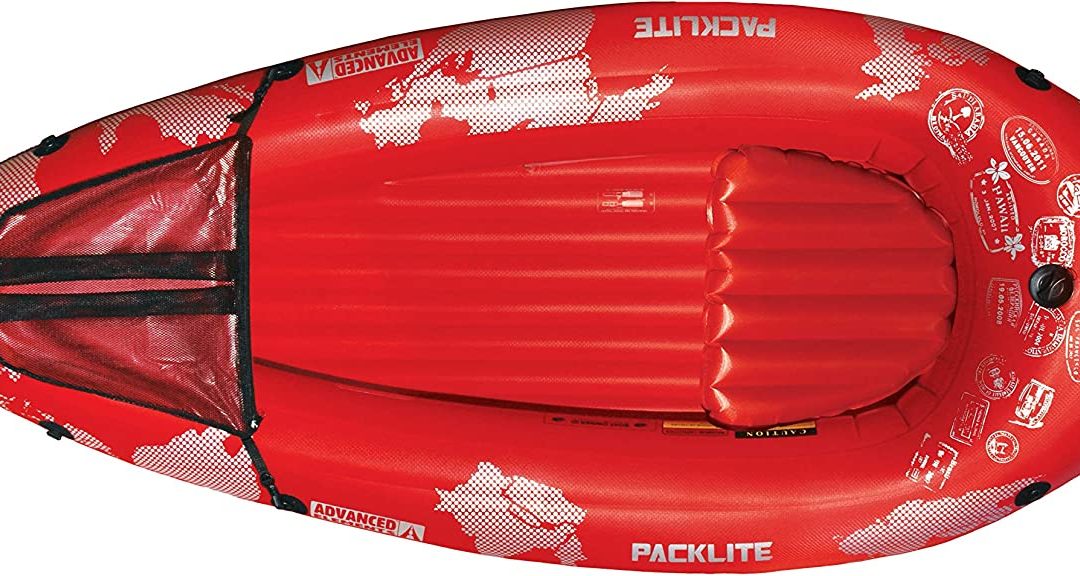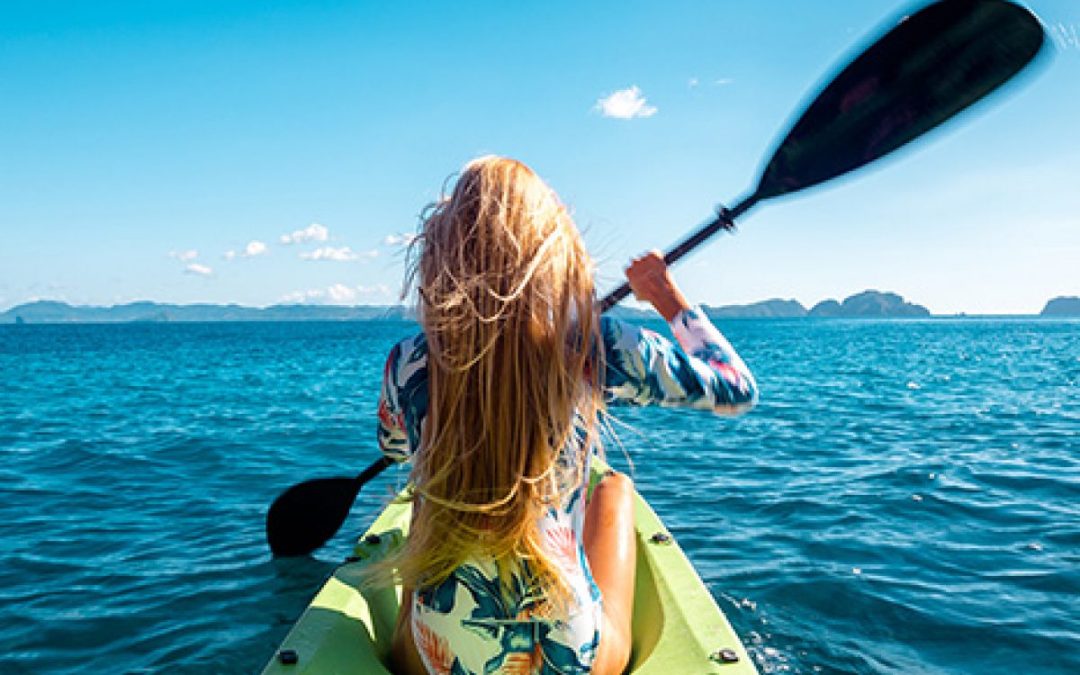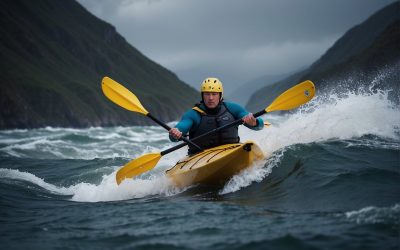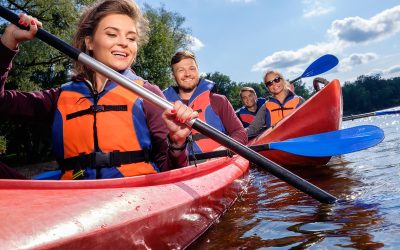Best Kayak Camping Gear List: Essential Items for Your Next Adventure
Kayak camping is an exciting outdoor activity that combines the thrill of kayaking with the serenity of camping. It’s a great way to explore the outdoors and connect with nature. However, to have a successful and comfortable kayak camping experience, you need to have the right gear. From essential items like a kayak and personal flotation device (PFD) to campsite gear like a tent and sleeping bag, there are several items that you need to consider when planning your kayak camping trip.
Understanding the different types of kayak camping gear available is crucial to ensure you have everything you need to stay comfortable and safe during your trip. Essential kayak camping gear includes a kayak, PFD, paddle, and dry bags. Campsite gear includes a tent, sleeping bag, sleeping pad, and camp chair. Safety and navigation gear includes a whistle, GPS, maps, and compass. Additional gear like a headlamp, repair kit, and multi-purpose tool can also be useful during your trip. Knowing what gear to bring and how to pack it can make all the difference in your kayak camping experience.
Key Takeaways
- Having the right gear is crucial for a successful kayak camping trip.
- Essential gear includes a kayak, PFD, paddle, and dry bags, while campsite gear includes a tent, sleeping bag, sleeping pad, and camp chair.
- Safety and navigation gear like a whistle, GPS, maps, and compass are also important to bring on your trip.
Understanding Kayak Camping Gear
Kayak camping is an exciting way to explore the great outdoors. However, like any other outdoor activity requires proper planning and preparation. One of the most important aspects of kayak camping is having the right gear. This section will discuss the essential gear needed for a successful kayak camping trip.
Kayak
The kayak is the most important equipment for a kayak camping trip. Choosing a kayak suitable for the type of water, you will be paddling in is important. For example, a recreational kayak is great for calm lakes and slow-moving rivers, while a touring kayak is better suited for open water and faster currents. It is also important to consider the size of the kayak and how it will fit your body and gear.
Camping Gear
Camping gear is essential for a comfortable and safe kayak camping trip. The following items are some of the most important camping gear to consider:
- Tent: A lightweight and waterproof tent is essential for shelter and protection from the elements.
- Sleeping bag and pad: A warm and comfortable bag and pad are important for a good night’s sleep.
- Stove and fuel: A portable stove is necessary for cooking camping meals.
- Cookware and utensils: Lightweight and durable cookware are important for preparing and eating meals.
- Water filter or purifier: A water filter or purifier is necessary for safe drinking water.
- Headlamp or flashlight: A headlamp or flashlight is necessary to navigate the dark.
- First aid kit: A first aid kit is important for treating injuries and emergencies.
Safety Gear
Safety gear is essential for any outdoor activity, and kayak camping is no exception. The following items are some of the most important safety gear to consider:
- Personal flotation device (PFD): A PFD is necessary for flotation and safety in an accident.
- Paddling knife: A paddling knife is important for cutting through ropes and other materials in an emergency.
- Whistle: A whistle is necessary for signaling for help in an emergency.
- Bilge pump: A bilge pump is important for removing water from the kayak in case of capsizing or taking on water.
- Navigation tools: Navigation tools such as GPS, maps, and a compass are important for navigating unfamiliar waters.
- Repair kit: A repair kit is necessary for fixing any damage to the kayak or gear during the trip.
In conclusion, having the right gear is essential for a successful and enjoyable kayak camping trip. By considering the kayak, camping gear, and safety gear, you can ensure that you are prepared for any situation during your trip.
Essential Kayak Camping Gear
Kayak camping is a fun and exciting way to explore the great outdoors. However, having the right gear to make the experience enjoyable and safe is important. Here are some essential gear items that every kayaker should have before embarking on a camping trip.
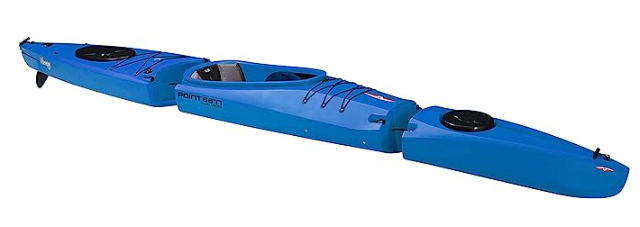
Kayak
The most important piece of gear for kayak camping is, of course, the kayak itself. When choosing a kayak, it is important to consider the type of water you will be paddling in, the length of your trip, and your preferences. Some kayaks are designed for calm lakes and rivers, while others are built for rougher waters. Choosing a kayak that is the right size for your body and your gear is also important.
Paddle
A good paddle is essential for any kayaker. When choosing a paddle, it is important to consider the length, weight, and blade shape. A longer paddle will provide more power but may be heavier and more difficult to maneuver. A shorter paddle will be lighter and easier to handle but may provide less power. Choosing a paddle with a blade shape appropriate for your paddling style and the type of water you will be paddling in is also important.
Personal Flotation Device
A personal flotation device (PFD) is a must-have item for any kayaker. A PFD will keep you afloat if you capsize or fall out of your kayak. When choosing a PFD, choosing one that is comfortable and fits well is important. It should also be appropriate for the water you will be paddling in.
Dry Bags
Dry bags are essential for keeping your gear dry while kayak camping. Choosing dry bags that are the right size for your gear and made from high-quality materials is important. Look for dry bags that are waterproof, durable, and easy to use.
In summary, when preparing for a kayak camping trip, it is important to have the right gear. A good kayak, paddle, PFD, and dry bags are essential items every kayaker should have. You can ensure a safe and enjoyable experience on the water by choosing high-quality gear appropriate for your trip.
Campsite Gear
When planning a kayak camping trip, having the right gear to make your campsite comfortable is important. Here are some essential items to consider:
Tent
A good tent is crucial for a comfortable camping experience. Look for a lightweight and durable tent that can withstand the elements. The tent should be easy to set up and take down and have enough room for you and your gear. Some popular options include:
| Tent Name | Capacity | Weight | Price |
|---|---|---|---|
| MSR Hubba Hubba NX | 2 | 3 lbs 14 oz | $449.95 |
| NEMO Dagger 2 | 2 | 3 lbs 14 oz | $429.95 |
| Big Agnes Copper Spur HV UL2 | 2 | 2 lbs 12 oz | $449.95 |
Sleeping Bag
A good sleeping bag will keep you warm and comfortable throughout the night. Look for a sleeping bag that is lightweight and compact but also warm enough for the expected temperatures. Some popular options include:
| Sleeping Bag Name | Temperature Rating | Weight | Price |
|---|---|---|---|
| Marmot Trestles Elite Eco 20 | 20°F | 2 lbs 8 oz | $159 |
| The North Face Eco Trail Bed 20 | 20°F | 2 lbs 12 oz | $139 |
| Kelty Cosmic 20 | 20°F | 2 lbs 13 oz | $169.95 |
Cooking Equipment
Having the right cooking equipment is essential for preparing meals at your campsite. Look for lightweight and durable options that are easy to pack and use. Some popular options include:
- Jetboil Flash Cooking System
- MSR PocketRocket 2 Stove
- GSI Outdoors Pinnacle Dualist Cookset
It’s also important to bring a water filter or purification system to ensure safe drinking water. The Sawyer Mini Water Filtration System is a popular and lightweight option.
You can ensure a comfortable and enjoyable kayak camping trip by bringing along the right campsite gear.
Safety and Navigation Tools
Kayaking and camping can be a lot of fun, but taking safety seriously is important. Every kayaker should have several essential safety and navigation tools on hand when camping.

First Aid Kit
Accidents can happen, so it’s important to be prepared with a first aid kit. A basic first aid kit should include bandages, gauze, adhesive tape, antiseptic wipes, pain relievers, and tweezers. Including any medications you may need, such as allergies or an EpiPen, is also a good idea.
Compass
A compass is an essential navigation tool for kayakers. It can help you navigate unfamiliar waters and ensure you’re heading in the right direction. When choosing a compass, look for one that is waterproof and has a clear, easy-to-read display.
GPS
A GPS can be a great backup to a compass, especially if you’re kayaking in an area with poor visibility or difficult terrain. A handheld GPS can help you navigate unfamiliar waters and track your location. Look for a GPS that is waterproof and has a long battery life.
Remember, safety should always be your top priority when kayaking and camping. Packaging the right safety and navigation tools lets you enjoy your trip with peace of mind.

Additional Gear
In addition to the essential camping gear, a few additional items can enhance a kayak camping trip. Two popular categories of additional gear are fishing gear and photography equipment.
Fishing Gear
For those who enjoy fishing, bringing fishing gear can add fun and excitement to a kayak camping trip. Here are some items to consider bringing:
- Fishing rod and reel
- Tackle box with a variety of lures and bait
- Fishing line and hooks
- Pliers or a multi-tool for removing hooks
- Fish finder or depth finder
It’s important to check local fishing regulations and obtain any necessary licenses before embarking on a fishing trip.
Photography Equipment
Kayak camping trips offer plenty of opportunities for taking stunning photos of nature and wildlife. Here are some items to consider bringing along for capturing those perfect shots:
- Waterproof camera or camera housing
- Tripod for stability
- Extra camera batteries and memory cards
- Cleaning kit for lenses and camera body
- Polarizing filter for reducing glare on water and improving color saturation
It’s important always to respect wildlife and natural habitats while taking photos and to follow Leave No Trace principles to minimize the environmental impact.
By bringing along some fishing gear or photography equipment, kayakers can add an extra level of enjoyment to their camping trip.
How to Pack Your Kayak Camping Gear
When packing for a kayak camping trip, it’s important to consider weight and space limitations. Here are some tips for packing your kayak camping gear:
1. Use Dry Bags
Dry bags are essential for keeping your gear dry and organized. Use different colored dry bags for different items such as clothes, food, and camping gear. This will make it easier to find what you need quickly.
2. Pack Light
Kayaks have weight limits, so it’s important to pack light. Only bring what you need and leave unnecessary items behind. Choose lightweight gear and clothing whenever possible.
3. Balance the Weight
Distribute the weight of your gear evenly throughout the kayak. This will make it easier to paddle and maneuver. Place heavier items in the kayak’s center and lighter items at the ends.
4. Secure Your Gear
Use bungee cords or straps to secure your gear to the kayak. This will prevent it from shifting or falling out of the kayak while paddling.
5. Pack for Convenience
Pack items you will need during the day in an easily accessible location. This could include snacks, sunscreen, and a water bottle. Keep items you won’t need until camp, such as your tent and sleeping bag, in the bottom of the kayak.
6. Leave No Trace
When packing up your gear, be sure to leave no trace. Pack out all trash and dispose of it properly. Leave the campsite better than you found it.
By following these tips, you can efficiently pack your kayak camping gear and enjoy a comfortable and enjoyable trip on the water.
Maintaining Your Kayak Camping Gear
Kayak camping gear is an investment that requires proper maintenance to ensure it lasts for many trips to come. Here are some tips for maintaining your gear:
Kayak
- Rinse your kayak with fresh water after each use to remove salt and debris that can cause damage.
- Store your kayak in a cool, dry place away from direct sunlight to prevent fading, warping, or cracking.
- Before each trip, check for any cracks or damage to avoid mishaps while on the water.
Paddle
- Rinse your paddle with fresh water after each use to remove salt and debris that can cause damage.
- Store your paddle in a cool, dry place away from direct sunlight to prevent fading, warping, or cracking.
- Before each trip, check for any cracks or damage to avoid mishaps while on the water.
Tent
- Air out your tent after each use to prevent mold or mildew growth.
- Store your tent in a cool, dry place away from direct sunlight to prevent fading or damage to the material.
- Check for any tears or damage and repair them promptly to avoid water leaks during your next trip.
Sleeping Bag
- Air your sleeping bag after each use to prevent mold or mildew growth.
- Store your sleeping bag in a cool, dry place away from direct sunlight to prevent damage to the material.
- Wash your sleeping bag according to the manufacturer’s instructions to keep it clean and fresh.
Other Gear
- Rinse all other gear with fresh water after each use to remove salt and debris that can cause damage.
- Store all gear in a cool, dry place away from direct sunlight to prevent fading or damage to the material.
- Check for any tears or damage and repair them promptly to avoid any issues during your next trip.
Following these tips ensures that your kayak camping gear stays in top condition for many future trips.
Pros and Cons of Camping Gear
When it comes to selecting camping gear for a kayak trip, there are a lot of factors to consider. While some gear might be essential, other items might be nice-to-haves. Here are some pros and cons when selecting gear for your next kayak camping trip.
Pros
Durability: One of the biggest advantages of investing in high-quality camping gear is that it is built to last. Gear designed for outdoor use is often made with tough materials that can withstand the elements and hold up to wear and tear.
Versatility: Many camping gear items are designed to be multi-purpose, which can be a huge advantage when packing for a kayak trip. For example, a sleeping pad can double as a seat during the day, while a camp stove can cook meals and boil water for drinking.
Comfort: While camping is often associated with roughing it, having the right gear can make a big difference in comfort. A good sleeping bag, for example, can keep you warm and cozy even on chilly nights, while a camp chair can provide a comfortable place to sit and relax.
Cons
Cost: High-quality camping gear can be expensive, disadvantaging those on a tight budget. While some items might be worth the investment, others might not be necessary for a successful kayak camping trip.
Weight: When packing for a kayak trip, every ounce counts. Heavy gear can be a burden, especially when carrying it from your kayak to your campsite. Choosing lightweight gear can help make your trip more enjoyable.
Space: Space is often at a premium when packing for a kayak trip, so it’s important to choose compact and easy gear to pack. Bulky items can take up valuable space in your kayak, making bringing along everything you need difficult.
Overall, selecting the right camping gear for a kayak trip requires careful consideration of your needs, budget, and space constraints. By weighing the pros and cons of different gear items, you can choose the items that will best meet your needs and help you have a successful and enjoyable trip.
Frequently Asked Questions
What should I pack for an overnight kayaking trip?
When packing for an overnight kayaking trip, it’s important to consider the essentials. A few must-have items include a kayak, emergency paddle, bilge pump, and dry pack/bags. You will also need a sleeping pad, pillow, and a waterproof headlamp. Other items to consider include a camp chair, spray skirt, sleeping bag, and multi-purpose tent. Pack a repair kit and personal flotation device (PFD) for safety.
How do you pack a kayak for camping?
Packing a kayak for camping requires careful planning and organization. Start by packing your gear in dry bags to keep everything dry. Place heavier items like your tent and sleeping bag at the bottom of your kayak, followed by other gear like cooking supplies and food. Pack items you will need during the day, such as sunscreen and sunglasses, in a separate dry bag that you can easily access while on the water.
What are the best kayak camping foods?
Regarding kayak camping foods, it’s important to pack lightweight, non-perishable items that are easy to prepare. Some great options include dehydrated meals, energy bars, nuts, and dried fruit. Pack a camp stove, fuel, and cooking utensils like a pot and spatula.
What do I need to take on a kayak trip?
When going on a kayak trip, you must pack essential gear like a kayak, paddle, PFD, and bilge pump. You should also bring a waterproof headlamp, spray skirt, and dry bags to keep your gear dry. Other items to consider include a first aid kit, map and compass, and a whistle for safety.
What are the essential items for a sea kayak expedition?
A sea kayak expedition requires careful planning and preparation. Essential items include a sea kayak, paddle, PFD, and spray skirt. You will also need a waterproof headlamp, dry bags, and a repair kit. Other items to consider include marine radio, compass, and GPS for navigation. Pack plenty of water, food, and a first aid kit.
What gear do I need for a multi-day kayak trip?
A multi-day kayak trip requires careful planning and organization. Essential gear includes a kayak, paddle, PFD, and bilge pump. You will also need a waterproof headlamp, dry bags, and a repair kit. Other items to consider include a tent, sleeping bag, and cooking supplies. Remember to pack plenty of water, food, a first aid kit, a map, and a compass for navigation.






